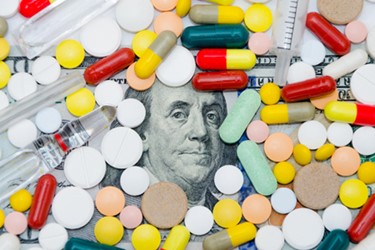What If Our Generics Strategy Has Been All Wrong?

By Louis Garguilo, Chief Editor, Outsourced Pharma

What if we’ve been going at this the wrong way for decades?
If generics – and now biosimilars – are not a sound solution for patients, hospitals, healthcare systems, governments, or pharmaceutical companies, when it comes to all parties profiting from the miracles of our best drugs?
If all along we’ve overlooked – or been tricked to look away from – a more reliable business model?
A model where drug development, commercialization, and dispensing of new drugs more deeply rewards us long term, with higher quality and more efficacious medicines at affordable pricing.
In a series of Outsourced Pharma editorials based on discussions with various industry professionals, I’ll address this hypothesis:
With some systemic changes, pharmaceutical companies could set prices for innovative drugs that: (a) preclude any second company from taking over substantial parts of the market with generics; and (b) provide innovators a profitable return on investment for an expanded life cycle of their original drugs – that is until competition from newer innovator drugs comes along.
Confounding Construction
We have not built a healthcare system for delivering the highest quality and most efficacious drugs to patients and consumers in the United States.
Instead, we have cobbled together a system designed to force-feed cheap, not-exact copies of our best drugs to as many people as possible.
Patients are told generics and biosimilars will rescue a financially teetering U.S. healthcare system. This despite the fact the cost of pharmaceuticals only makes up an estimated 15% of total healthcare expenditures.
Moreover, next to negatively impacting the health of patients and consumers, here’s another irony: The pursuit of economic gains via generics and biosimilars is ethereal. Already an estimated 90% of the drugs dispensed today are generics, but the cost of our best drugs continues to elevate.
Through misapplied reverence for cheap drugs, we’ve hollowed out a significant segment of our domestic manufacturing industry, forced our contract development and manufacturing organizations offshore, and in effect perverted the objectives and utilization of CDMOs and other supply-chain partners – from raising quality to lowering prices as main objective.
In return, we’ve opened our shores to an invasion of less-safe and -regulated drugs, despite warnings from those U.S.-based CDMOs of the quality and supply challenges we in fact have been experiencing.
We’ve compromised national security by putting our drug supply chains overseas; we’ve played into the geopolitical hands of China, for example.
Yes, there are many considerations when discussing where to develop and manufacture drugs, the role of generics and biosimilars, and more broadly drug pricing and healthcare in the U.S.
A historic consideration to all these has been the central role of patents. I believe, quite to the contrary of this historic direction, we should consider revising and extending new-drug patents. We’ll consider how that would come about.
We’ll also revisit the well-intentioned but outdated Hatch-Waxman Act of 1984; the role of the FDA; the middle bloat of U.S. healthcare (e.g., pharmacy benefits managers (PBMs)); and the disposition of our outsourcing industry.
But by sheer force of habit, when it comes to rising costs associated with healthcare, most everyone starts with innovative-drug pricing.
So we’ll begin there, too.
Poor Perspective

“Pharma and biotech don’t like the idea. But whether we do or not, it will arrive in some form. It may not happen this year or next, and it has nothing to do with the current government administration, or future administrations. Price controls will happen simply because healthcare costs, including prescription drugs, is now a millstone around the neck of this entire country.”
Lammers believes he knows the ultimate choke-point:
“Think about the price difference between small molecules versus more expensive biologics. Likewise, the costs of developing a generic biologic are substantially higher than for a generic small-molecule product. In fact, you can see a biologic going off patent, but the drop in the biosimilar price is not substantial. It might be 20% or 30%. With small molecules, it might drop 90%. So even copies of new drugs will become more expensive.
“Now consider that today still over 95% of prescribed drugs are small molecules, and only 5% biologics,” continues Lammers. “As more biologics are approved, it will take some major earthquake or require a seismic shift to get drug prices significantly down in the future.”
The Shift From Generics
Perhaps that shift begins with this realization that a system based on generics and biosimilars as economic lynchpins for healthcare is bogus.
First, as we noted above, the cost of drugs makes up ~15% of U.S. healthcare costs. Forcing patients onto cheaper drug copies is no coherent solution to pricing or improved healthcare.
Second, we need to fully quantify how innovator drugs often ultimately save the healthcare system millions of dollars – at times per patient. When a biologic with a list price of $750,000 cures a disease until now incurable and costing the healthcare system millions of dollars in chronic patient care, we must recognize and market that value.
Third, generics or biosimilars are not exact copies; increasingly, patients and consumers report generics are less beneficial – and in some cases these cheaper copies have proven deadly. Since we pursue price over quality with a generics strategy, supply chains are inherently less safe than for innovator drugs.
Finally, pharmaceutical companies themselves are not blameless as they attempt (or feel forced) to game this system that is actually set up primarily for the introduction of drug copycats, not for innovation.
Which brings us back to the start:
There is a strategy by which innovator companies can price new drugs for profit, and so patients can receive them until new innovator drugs arrive, precluding the need for generics or biosimilars to ever enter the supply chain.
In following editorials, we’ll try to find it.
-----------
*This is the first in a three-part series on the use of generics in the U.S. healthcare system. Here are links to part two and part three.
